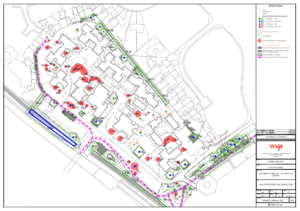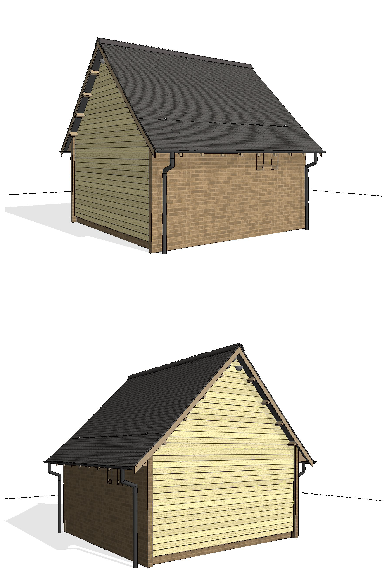
Bat Barn Bat Box Post Objection
GBE > Projects > Buildings > Case Studies > Objection > G#38145
Bat Barn Bat Box Post Objection
About:
Planning Objection:
- Please note this is not an objection to a bat barn and bat posts
- On the contrary we welcome them, but they do not comply with Bat Conservation Trust published recommendations
- In their current form they will do little useful for bats.
- This is a case study of a Full Planning Application objection by residents
- It is recorded here to help other residents understand the process of objecting to a Planning Application
- GBE have include documents and templates that can be edited and made specific to other sites
- We do not yet know the outcome but will update this page as it happens
A Diversion: Bat Barn and Bat Box Posts
- A separate full planning application has been submitted for the Bat Barn and additional Bat Box Posts
- We have prepared feedback, awaiting community feedback
- We will submit in due course.
- Second Draft
Gloucester Centre Site Bat Barn & Posts Full Planning Application
Planning policy relevant to this application:
- See also:
- Tree Felling (Objection) G#38325
Comments by local residents
We have studied the proposal and we have some reservations.
- A great deal of effort has gone into the design and specification of the Bat barn
- It is a very generous effort to make provisions for bats and birds
- But is fails to meet numerous, fundamental, BCT Bat Conservation Trust published recommendations for the species present on the site
- Is this proposal in specific response to the site, existing bat populations and their needs or a generous effort but a non-specific misguided response?
- If this drawing is specific to this site, more work needs to be done before this is competent, appropriate and approvable.
- If this drawing is a template for many projects it needs to be corrected urgently
- In the hands of novices this will create more follies
- If this proposal is not corrected it could become a failure, bats do not occupy it, bats leave the site altogether, become a bone of contention and symbol of all that is bad about the planning process and those involved in it.
- If this proposal is corrected to meet BCT published minimum recommendation and it becomes an effective replacement for the existing bat roots, it could become a real success for bats and birds, and wider biodiversity and for the development of this site which all of Peterborough should be proud of.
- We wholeheartedly wish for the latter.
Maintaining Biodiversity on the site and surroundings:
- We will continue to object to the proposed residential development, which proposes to demolish existing bat roosts and fells 96 mature trees, some of which are known to be bat foraging ground and food-source tree species.
- However if the residential proposal gets bulldozed through the planning process unscathed, then we want some assurance that the documented and observed wildlife on the site and surroundings is to be maintained, enhanced and not just abandoned.
- See Local Policy above
- To be assured of success the bat provisions need to be in place and in use well in advance of the proposed demolition for development.
- So the early application for bat and bird provision is welcomed, but its implementation needs to be immediate, and monitoring for occupation, needs to start as soon as it is complete.
- Only when the successful and long-term transfer of bats from their existing roosts to the bat barn and bat box poles has happened should permission be granted for a significantly improved residential development.
- However WSP the named ecologist
- (Also the designer of the residential development
- potential conflict of interest?)
- Will monitor for 5 years after construction
- But no set period, before demolition of existing roosts, to ensure the bats have successfully transferred and not left the site altogether
- (Also the designer of the residential development
- There is no mention in the proposal for encouraging the existing bats out of their existing roosts and into the proposed bat barn or bat box poles, as if it will happen by magic.
- Licenced manual transfer does not guarantee the bats will stay, but return to their existing roosts, nor that it will be a success.
- There is no provision in this applications for planting food-source tree species to replace the ones envisage to be felled for the recent outline proposal for residential development.
- Trees will need time to mature to become the home of the species that are the food source for the bats.
- If the combination of the two proposals result in a loss of food source then the proposals are unlikely to succeed.
- The separation of the two planning applications lends itself to lack of joined up thinking and joined up design
- The changes in site levels in the residential development will undermine the foundation of at least 3 of the bat box poles.
- Where are the provision for the other observed wildlife inhabiting or using the site and surroundings?
- Swallows are provided for but are they present here?
- There are case studies of multi-functional multi-species purpose made buildings available.
On site survey results:
- Number of roosts: 5 buildings 16 roosting locations (including 2 possible maternity roost)
- Number of bats: 12 pipistrelle, (other species numbers not collected)
- Bats discovered by survey:
- Confirmed roosting (CR)
- Common pipistrelle (CR); (Crevice dwelling)
- Soprano pipistrelle (CR); (Crevice dwelling)
- Brown long-eared bat (CR); (Needing flying space)
- Natterer’s bat (CR) (Needing Flying space)
- Commuting or foraging within the site (CF)
- Nathusius’ pipistrelle Pipistrellus nathusii (CF); (Crevice dwelling)
- Noctule Nyctalus noctula (CF); (Crevice dwelling)
- Leisler’s bat Nyctalus leisleri (CF); (Crevice dwelling)
- Serotine Eptesicus serotinus (CF). (Crevice Dwelling)
- Species in roosts:
- Occasional roosts: were found in the
- Activity Block
- (Natterer’s bat Myotis nattereri),
- Grebe House
- (Pipistrellus sp.)
- Beech House
- (Brown long-eared bat Plecotus auritus),
- while two likely maternity roosts: were found in
- Pembroke and Kendall
- (Soprano pipistrelle Pipistrellus pygmaeus and
- Common pipistrelle Pipistrellus pipistrellus).
- Pembroke and Kendall
- Activity Block
- Occasional roosts: were found in the
- Confirmed roosting (CR)
Proposal:
- The proposal appears to include a survey and a working drawing, where are the missing steps in the process, the briefing and design proposal?
Brief for provision on site:
- Entrance height, size and shapes needed: (Bat Conservation Trust published recommendations)
- Crevice dwelling: (numbers not provided due to insufficient survey information)
- Not illuminated entrance
- Entrance 2-7 m above ground
- Entry hole: 20-50 mm w x 15-20 mm h
- Crevice size: 20-30 mm wide x 1 m2 area (summer maternity nursing roosts)
- Passage way: 20 mm minimum
- Surfaces: rough for grip
- Need Flying area: (numbers not provided due to insufficient survey information)
- Not illuminated entrance
- Entrance Height: over 2 m
- Entry hole: 20-50 mm w x 15-20 mm h
- Crevice size: 20-30 mm wide x 1 m2 area (summer maternity nursing roosts)
- Roost Flying space dimensions: 2.8 (preferred) to 2 m (in special circumstances) h x 5 m w x 5 m l
- Surfaces: rough for grip
- No evidence that swallows are present (not part of that survey)
Location of proposals:
- The proposal appears to include a survey and a working drawing, where are the missing steps in the process, the briefing and design proposal?
- The Bat Barn is in a new location, well away from the location in the previous residential outline planning proposals, it would be good to know if this change was justified or just changed, is it better placed here or worse?
- Residential application: 19/01244/OUT see later notes below
- The Bat Box Pole are a new addition to the proposals, since the trees the boxes were previously stated to be fixed to, are proposed to be felled.
- We wish to remind the owners, agents, developers and planners 40 year old, mature, but not decrepit, trees are an asset that give the site real character, provides for biodiversity, and would enhance any development proposal (if a little inconvenient to persistently profit hungry parties)
- Local Policy: See notes above
- Moving the bat provisions after completion or during site redevelopment to acknowledge or accommodate any of the below will put at risk any good that has been achieved by its creation.
- Have the new bat boxes on poles and bat barn locations (or for that matter the previous location) taken into account the following:
- Noise from the parkways (closer proximity than the existing roosts)
- Pollution from the parkways (closer proximity than the existing roosts)
- Light pollution from the off ramp and roundabout of the parkways leaving the bats vulnerable to predation by birds when exiting and entering roosts. (closer proximity than the existing roosts)
- Existing bat roost, foraging and pond locations
- Existing bat flight paths along tree and hedge lines
- Existing bat food-source trees to be retained, if any (4 are known to be on the exiting site and one other in the surrounding estate, know to be foraging grounds for existing bats)
- Entry and exit holes heights above ground, entrance orientation and space for flights to and from the proposed roosts
- 5 m from any building (walls to garden) or vegetation (hedgerow and garden hedging): is this enough?
- Is there good solar access to ensure the sun reaches the bat barn over the hedgerow and trees
- Light pollution from the pedestrian/cycleway lighting putting the bats at risk of predation by birds, cats, etc.
- Proximity of the bushes/hedges/trees on the site boundary
- The narrowing of the site towards the southern corner
- Raised site level (1 m or 2 m of made up ground) Foundations 2 meters deep, through made up ground into clay
- Has the location been compromised by consideration of the following?:
- Proposed residential Construction Site accommodation, staff car parking, vehicle, plant and labour movement
- Dust arising from demolition of the existing facility
- Waste arisings from demolition and their skip locations
- Materials storage for the construction of the residential development
- Location of the 2 proposed SuDS attenuation ponds for the proposed residential development (most recent plan).
- The realignment of the existing cycleway/footpath
- Location of street lighting of the proposed residential development, leaving the bats vulnerable to predation by birds when exiting and entering roosts.
- Changes in site levels from existing raised banks to below ground SuDS ponds will undermine the foundation of 3 or more of the bat box poles.
- Will all these bat and bird provisions and their access and egress flight paths be given the same level of protection as trees on construction sites, during demolition and construction?
- Has the location been compromised by the end use?
- This raised bank:
- Will be the only left over space on the site
- Is the only space not occupied by road, footpath, cycleway, housing or SuDS ponds
- It will be the only space suitable for outdoor play
- If it is outdoor play space it will generate activity and noise that potentially disturbs the bats sleeping in the day
- Children’s play may lead to impacts that could be disturbing for the bats
- Inquisitive children and adults may lead to physical disturbances
- Whilst unlimited fines may be available for disturbances by owners and contractors
- How will this be a deterrent to children or visitors?
- The only robust safeguard is to create an exclusion zone for people
- Making it a stilted building within a SuDS pond may be a possible solution.
Construction Environment Management Plan (CEMP)
- The document reveals its true nature by insufficient editing
- It is copied from a Classroom Block document and edited,
- The difference in scale of developments suggests the scale of temporary provisions will be very different
- Since the bat barn and bat box poles need to be erected well in advance the residential redevelopment site, it is unlikely to benefit from wheel washing facilities
- Site activity limitations seem to contradict themselves and appear to only apply to noisy work.
- Arisings are likely to be:
- Active: turf, topsoil, offcuts of oak and ‘telegraph poles’, unset mortar
- Inert: subsoil, offcuts from clay brick, slate and clay roof tile, and concrete block, set mortar, set concrete
- Packaging: softwood pallets, strapping, polyethylene strapping, wrapping and sacks, paper, cardboard
- Excess to requirements: Brick, block, slates and roof tiles, oak, topsoil
The bat barn
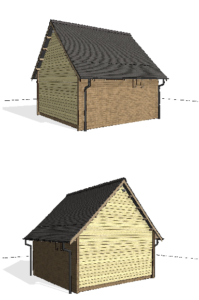
- The proposal appears to include a survey and a working drawing, where is the missing step in the process, the design proposal?
- A bat barn appears to be welcome but it must be ‘fit for purpose’, and the proposal need to be tested against that requirement.
- See previous notes about location above
- The information provided makes no claim to provide roosts for any particular species and no claims to provide any number of roosts for any of those species found in the survey (numbers not recorded)
- The information makes no reference to the bat surveys, the numbers of each species found or their specific requirements.
- Building a barn and calling it a bat barn does not make it a bat barn.
- There is space but no specific annotated provision for roosting or hanging by bats.
- Rough textures are essential for grip for climbing in crevices
- Bats need textured surfaces for claws to hang from, there is nothing show here
- Ridge beam is only surface to hang from but its texture is not specified
- Grain direction on other sloping sections are not compatible with hanging
- Crevice dwelling bats:
- May find their way from the eaves, verges and ridges entrance holes into the cavities in the construction, but rough surfaces are essential for grip for climbing in those crevices
- It is not clear the purpose of the un-sized ‘gaps’ in the mortar bedding to the ridge tiles
- Is this for heat exhaustion from the clay tiles batten zone or the ridge zone?
- This cooling may be the opposite to what the bats require from their roost
- Maternity roots benefit from summer solar heating of roof tile keeping the roosts warm
- Is these are additional entrance/exit holes from a potential roost under the ridge tiles
- The hole are not sized in accordance with BCT published information
- More specific information is needed for the builder to create and link/separate chambers below the ridge tiles to the barn space.
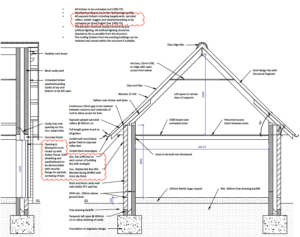
-
- Bats needing flying space:
- Also like crevices for roosting
- The floors, bearing in the walls, is set to create three spaces, none of which follow BCT published guidance for size of space for flying
- Lower two spaces heights are too small 1350 mm and 1200 mm
- Both are less than 2800 mm (BCT published recommendation)
- Remove the suspended floor and the height is 2700 mm which is far closer
- Raise the upper deck to get a more compact hot roost
- The width and length are too small at 3102 and 3327 mm
- are both less than 5000 mm (BCT published recommendation)
- Shelf specified as OSB, (with synthetic off-gassing from glues) ideally more green oak boards here not OSB
- How to the bats get from the lower to the middle space if the hatch is closed
- Is there room to fly to the potential ridge hanging perch location?
- Bats needing flying space:
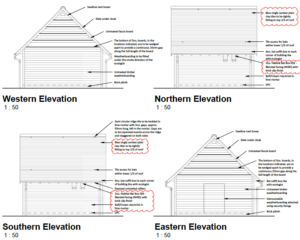
-
- Bat boxes in wall and at eaves
- Entry holes should be 2000 mm from the site level (BCT published minimum recommendation)
- To allow flight up into and flight down out of roost boxes
- The eaves height is just too low circa 1800 mm
- So the built in bat boxes need to be as high as possible
- But the model shown will have entry at 1500 mm (500 mm too low risking impact with the ground during egress and entry flights)
- All those boxes and entries may prove redundant due to insufficient height above the site level
- Wall ties: RT2-225 for 100 mm uninsulated cavity
- Bat boxes in wall and at eaves
Materials: Bat barn


- Specifies free draining backfill
- Arisings are likely to be clay subsoil, unlikely to free draining
- It specifies British Sugar topsoil, reclaimed from sugar beat washing;
- How is this beneficial?
- What is its function or purpose?
- Why does this proposal need topsoil?
- Darkness provided by the bat barn will only support forced-rhubarb as a crop, that will not be happening.
- If bat droppings fall on the floor then any microbes in normal soil could help in its brake-down
- Is this topsoil rich in bacteria and microbes, will it survive in darkness?
- It shows cavity walls with no closure of cavities at top of wall leaving a 100 mm wide gap to crawl over, over 2m deep cavity for bats to fall into.
- The bat species identified in the surveys include bats that are not 100 mm long, this cavity must be closed (it can still be vented if required with weep hole vents)
- It specifies brickwork, a textured brick is probably climbable, a smooth one possibly not, needs scrutiny on choice
- It specifies lime mortar, a lower environmental impact and reversible construction (bricks reclaimable if the bat barn fails in its mission)
- Will cement mortar be substituted by the regular builder who does not normally use lime mortar?
- It specifies blockwork, a textured block is probably climbable, a smooth one possibly not, needs scrutiny of the final choice
- It specifies 100% FSC (Forest Stewardship Council i.e. Source and Chain of Custody) green oak (unseasoned, untreated and unfinished oak) as weatherboarding and framing, good choice.
- Some potential staining of ground from tanning from green oak (probably not an issue)
- See ‘source of green oak’ below
- Specifies reclaimed timbers from exiting buildings permitted: GreenWash
- The Bat barn has to be in place before demolition of exiting roosts is permitted
- So those timbers will not be available to reclaim
- It specifies OSB boards which are full of synthetic binder that may off-gas, that may not be compatible with bats, substitute more of the same green oak as boards.
- It specifies bitumen roofing felt (not modern breathable roofing membranes that are prone to trap bat claws), good choice.
- It specifies clay roof tiles: good choice; but does not specify bat entrance tile sets (but indicates holes).
- It specified slate undercloak: reasonable choice
- But could be the same clay roof tiles to minimise numbers of materials ordered and waste streams arising
- Any preservative treated softwood should be replaced by more green oak
- Battens for roofing tiles should be green oak as crevice dwelling bats may get into this zone
- Swallow next boxes are normally under eaves to provide tight fit and limited access by predators
- Sloping verges may not provide the protection unless the swallows complete the construction
- Eaves soffit boxes are not detailed and if made-up on site without guidance may be inadequate for the job.
Bat boxes on telegraph poles
- See previous notes about location above and undermining of foundations
- These are not reliant upon the existing trees, so does the proposed residential development still intend to fell all the trees on the proposed residential site?
- Do they still intend to fell all the existing bat food-source trees?
- Poles:
- “made of wood” in covering letter
- “Telegraph poles” in application
- Reclaimed telegraph poles:
- Preservative treated: with unsuitable unhealthy bitumen or pitch?
- 300 mm diameter, so not telegraph poles then
- Untreated non-durable softwood timber: Short life expectancy
- Treated softwood: longer life expectancy, not compatible with bats?
- Green Oak: (See ‘source of green oak’ below)
- 25 year life expectancy in contact with soil
- What provision to ensure a longer life without the preservative that are not compatible with bats?
- Top needs to slope 1:8 or early deterioration will occur
- Roost Height above ground: (varying information)
- 4m (on drawing)
- minimum 4m (in accompanying letter)
- Bat Survey report: 3-4 m optimal
- Varying heights (Mitchell-Jones 2004)
- Take care of proposed site changes of level and set foundations at necessary level
- Don’t order 4m pole probably needs at least 7 m pole in minimum 3 locations
- Orientation: (contradictory information)
- Not facing prevailing weather (not SW) (5.1.14 of Bat Survey Report contradicts itself)
- Facing SE-S-SW for sunlight (5.1.14 of Bat Survey report contradicts itself)
- Facing 180 degrees to each other on same pole (Drawings)
- Will 50% of the roosts be redundant at any time?
- Bat roost provisions:
- Number of poles:
- 5 (site plan) (Fiduciary rules (profit making) getting in the way of competency)
- (not following their own (WSP) recommendations in report)
- 10 (in bat survey report)
- 5 (site plan) (Fiduciary rules (profit making) getting in the way of competency)
- Size of poles: 300 mm diameter (not telegraph poles then)
- Roosts per pole: 2 No. (10 No. roosts total) indicated at 180 degrees to each other
- But close to site boundary will 2 be practical
- Orientation of bat boxes is important (see above)
- Forcing bats to fly into slip road and roundabout flood lighting puts them at risk of predation
- Will 50% of the roosts be redundant at any time?
- Roost model:
- 2 No. Schwegler 2F (partly black painted to absorb warmth)
- General application bat box interchangeable door (if bats fail to migrate change to birds?)
- 8 No. Schwegler 1FF (black painted to absorb warmth)
- 270 mm wide ideally suited to a wider tree or post
- Schwegler boxes are known to be successfully occupied
- right material: woodcrete wood chips, clay and concrete (but only 20-25 year life expectancy)
- What obligations will be set to replace the roosts after 20-25 years?
- What obligation or plans for moving the bats to the new roosts?
- Entrance and exit holes to suit designed-for occupants
- bat entrance size and shape are essential (BCT published recommendations above)
- Do the selected roost models made for specific species or size of bat or roosts, match the needs for the bats surveyed on and around the site?
- Both roosts are designed for crevice dwellers
- Do they accommodate sufficient numbers of bats? (Limited information in Bat survey)
- Maternity roosts can need many perch hanging points
- right material: woodcrete wood chips, clay and concrete (but only 20-25 year life expectancy)
- 2 No. Schwegler 2F (partly black painted to absorb warmth)
Residential application: 19/01244/OUT
- NB: bat mitigation measures required in relation to 19/01244/OUT including the provision of
- bat boxes on 10% of all new dwellings is still required, in addition to this specific application.
- Schwegler 1FR Bat tube
- Schwegler 2FR Bat turbe
- 4 m above ground
- Southerly aspect
- Not into illuminated areas (risking bat predation by birds or cats)
Source of green oak:
- Nene park should have some oak soon when they tear some up in Oak meadow to make way for the climbing wall!
- It is unlikely to be FSC certified (specified in drawings) But ‘FSC reclaimed’ badge may apply
- Hope that proposal does not go ahead, reasons:
- Loss of indigenous oak trees and home for over 400 different indigenous species supported by them and many instances of each
- Floodlighting
- Loss of safe entry and egress from roosts for bats in the vicinity
- Loss of safe foraging areas for bats
- Risks of bat predation by birds and other animals
- But if it goes ahead,
- A moral argument to be had about using their oak or not.
- But oak must not just be landfilled.
- Nene Park may wish to make use of it, more totem poles?
- A tribute to the loss of the bats in the area?
- A snake head with forked tongue symbolising local planning policy and their contradictory actions
- See Local Policy above
GCD campaign group
Monday, 23 March 2020 – 28th March 2020
Bat Barn Bat Box Post (Objection) G#38145
© GBE NGS ASWS Brian Murphy aka BrianSpecMan *
23rd March 2020 – 5th April 2020
Bat Barn Bat Box Post Objection
Images:
FaceBook Group Page

Gloucester Centre Residents FaceBook Page
Tree felling and protection
Bat barn

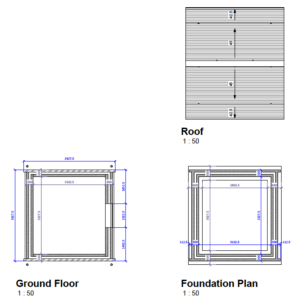


Project
- Pinterest Section Gloucester Centre Site
FPA Objection
Revision 1
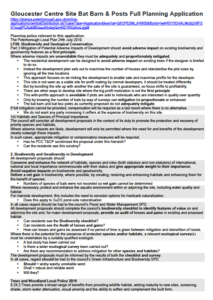
Gloucester Centre Site Bat barn Comment 280320 PDF
Original draft 1
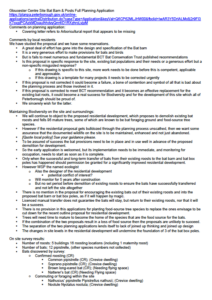
Gloucester Centre Site Bat Barn Poles Comment 230320
Gloucester Centre Site Bat Barn Poles Comment 230320
Development Public Displays
Leaflet Posting
Residents Tree Survey
- Pinterest Section Tree Survey
Residents Wildlife Survey
- See facebook page
- The Gloucester Centre Build
© GBE NGS ASWS Brian Murphy aka BrianSpecMan *
23rd March 2020 – 5th April 2020
Bat Barn Bat Box Post Objection
See Also:
GBE Books
- Designing for Biodiversity: A technical guide for new and existing buildings G#535 N#555
- Designing for Biodiversity: A Technical Guide for New and Existing Buildings G#1328 N#1316
GBE CPD
GBE CPD Titles
GBE CPD Topics
- Biodiversity CPD Topic (Navigation) G#568 N#588
GBE Jargon Buster
GBE Jargon Buster Theme
- Biodiversity (Jargon Buster Theme) G#645 N#667
GBE Case Studies
GBE Building Case Studies
GBE Case Study Objections
- Gloucester Centre Development (Objection) G#28968
- Bat Barn and Bat Box Posts (Objection) G#38145 (this page)
- Gloucester Centre Demolition (Objection) G#38285
- Tree Felling (Objection) G#38325
GBE Information
- National Policy Framework
- Local Plan
- Local Plan Improvement Campaign
- Climate Emergency Declaration
- Climate Emergency Response
© GBE NGS ASWS Brian Murphy aka BrianSpecMan *
23rd March 2020 – 5th April 2020

